WÜRZBURG, GERMANY. Undine Nami Bissmeier came into contact with Zen Peacemakers in 2012 and has participated in both the 2014 and 2015 ZPI Auschwitz Retreats. ZPI encourages reflections from retreats participants and members around the world as part of the practice of bearing witness and to share the depth and breath of Zen Peacemakers worldwide. What follows is Undine’s personal observations discussing how the polishing of the Stolpersteine, orchestrated by her teacher Roshi Cornelius, unexpectedly became a practice of non-violence and reverence for all life.
(Translated from the German by the author.) They exist in many German cities. Sometimes they shine golden, other times they have turned dark. Some people notice them, others do not. However, most pass them at some point. You can’t trip over them, but you can pause in front. I’m speaking about the Stolpersteine by the artist Gunter Demnig.
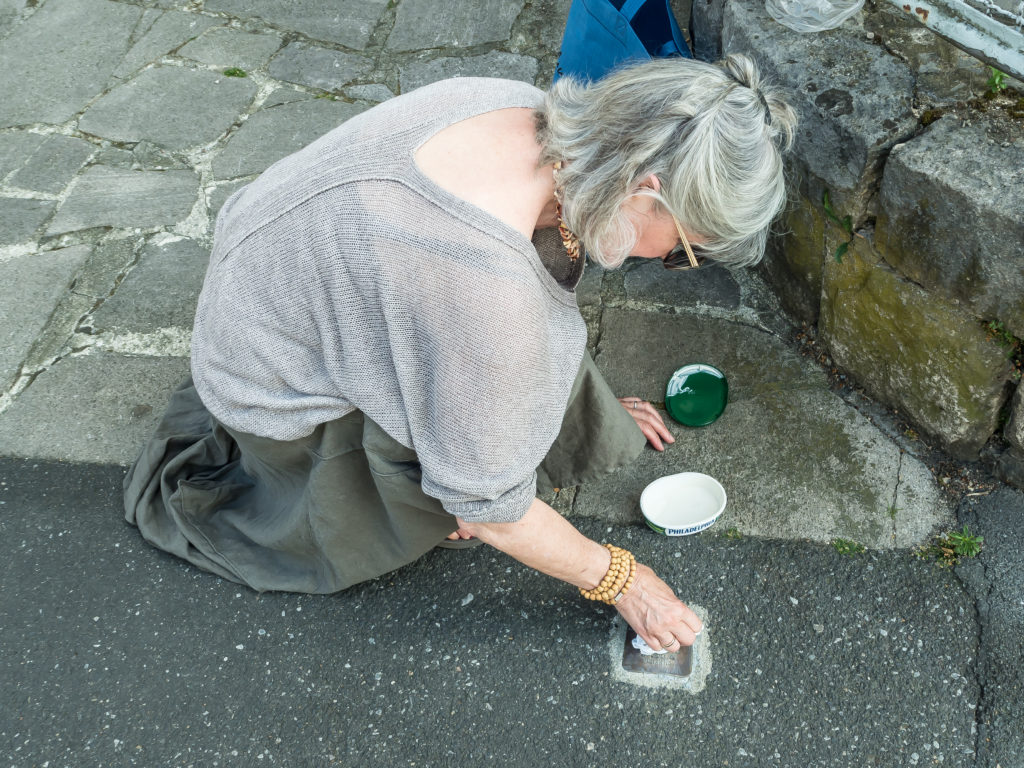
Stolpersteine (translated from the German language as stumbling stones) are cubes bearing a brass plate in the size of a cobblestone, which has been set into the floor of the sidewalks. The stones are laid in front of buildings where people were deported to concentration camps during the Nazi dictatorship. The name, date of birth and death, as well as the location of their death, are all inscribed on the stone. They remind me of the victims and their fates, reminding me of the German past.
When I came back from Auschwitz for the first time, they caught my eye more than before. I thought I had always taken note of them. However, that seemed not to be the case. I constantly discovered new stones in my city. Even adjacent to my house exists one I had never taken notice of in all twenty years of living in the area. Moses Baruch had been picked up here in 1940, taken to the Gurs camp in France and murdered two years later in Auschwitz. I had his name read by my teacher Roshi Cornelius on the selection ramp at the following Auschwitz retreat of the Zen Peacemakers, during a daily ritual at the retreat where the names of victims are read
.

In this huge cemetery, people were murdered and burned without dignity or respect. There were no funerals, no tombstones. There exists no possibility to visit graves or leave small stones on the tombstones, as is the Jewish tradition. Only nameless ash remained. No tombstones with names, no small stones laid upon them, only dust.
But now there are these Stolpersteine almost everywhere in Europe. I began to inform myself about this project and was surprised, as I came to discover that these stones have been laid in 24 European countries. Amounting to a total of 70,000. Some cities have created archives in which the lives of the people are very precisely recorded after they have been painstakingly reconstructed. There are city maps on the internet on which the stones are listed so that you can see where they lie.
The problem with the stones, however, is that the brass turns dark over time due to the environmental influences, and shines no longer. Therefore, they have to be cleaned with metal polish. Most stones are dark because there is no one responsible for this task.
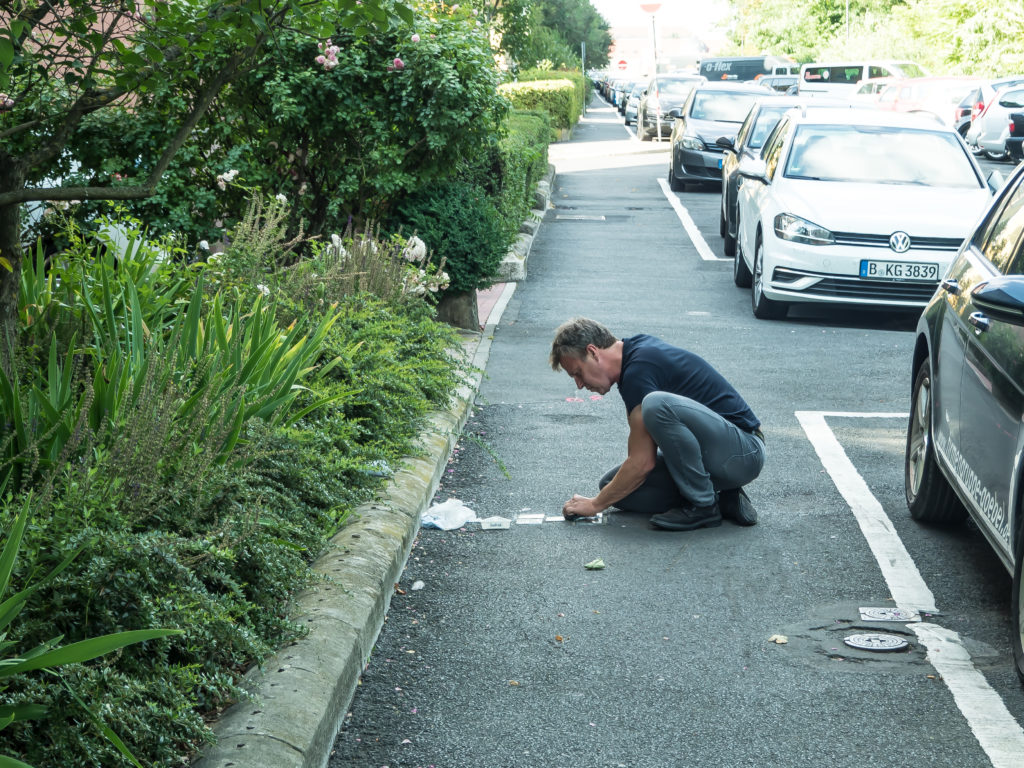
On a day of reflection (editor’s note: a recurring liturgy conducted by Zen Peacemakers) conducted by the Raben-Sangha in December 2018, we began to clean the stones.
First, the project was presented. Then the story of a Jewish family with three small children was told. Parents, children, and the grandmother were deported to Theresienstadt in 1942 and taken via Minsk to Auschwitz, where they were murdered in 1944. Some of us then moved a few houses further onto the six stones and polished them. The others went with the road maps, on which the Stolpersteine were listed in all directions cleaning other stones brightly.
I found the stone of a mentally ill woman who had been deported and murdered because of her illness. I am currently working in a closed psychiatric ward. The patients I care for today would have been killed in Germany, in my home country, during the Nazi period. When I polished the stone I had to think about how different lives are valued. I began to question what are the scenarios that take shape for certain groups of people to be so severely ostracized and despised to such a degree that they are collected and killed in camps? How does hate arise for people who are different somehow? Different because of their religion, skin colour, political opinion, sexual orientation or physical or mental disability.
Before partaking in this activity I did not think “When I polish Stolpersteine it will be a non-violent action and reverence for all life“. I didn’t deliberately think about doing anything that would put into practice one of the four Commitments of a Zen Peacemaker. But that is what it was: non-violence and reverence for all life. It is an attitude. An attitude that comes from the heart. When you listen with your heart to the situation of the Stolpersteine, you understand what is attached to it: Reverence and respect for the lives lived, compassion for the destinies of the people, the First Precept. I am not separate from all that is.
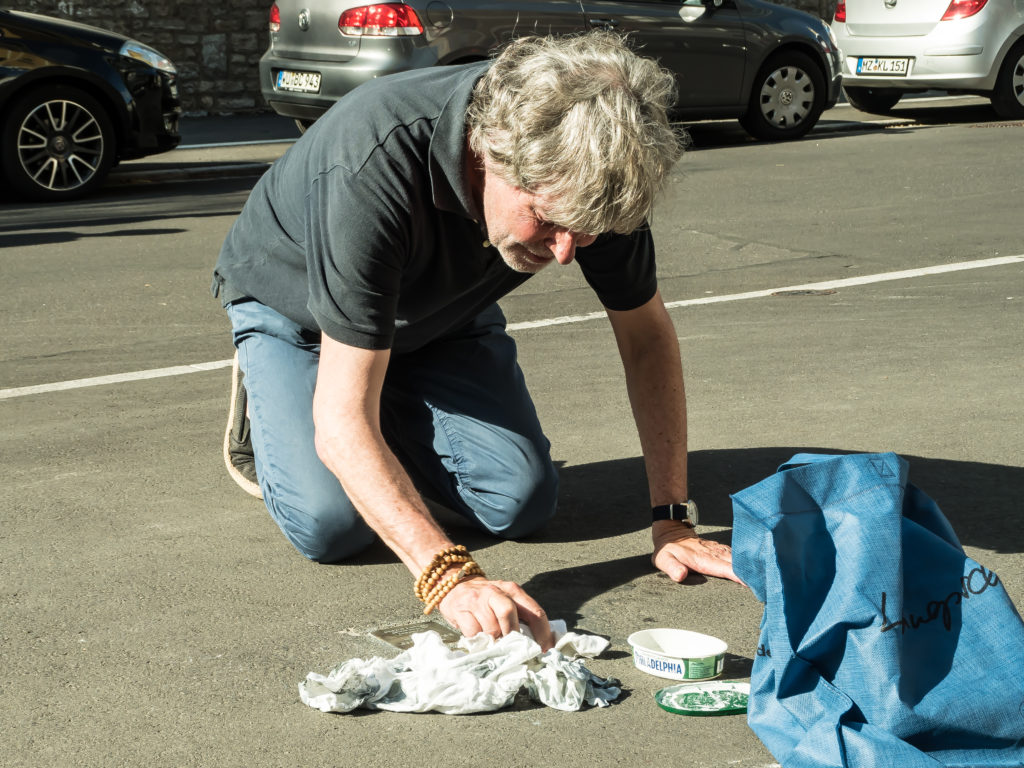
To perceive the names of the murdered with an open heart, to read them, to polish them with one’s own hands, to hear the names inwardly with one’s heart, all this reminds me of reading the names on the selection ramp in Auschwitz. Here, too, I had the feeling that the appreciation of the victims’ names was something very important that somehow showed each of them respect and honour. And it’s important that we never forget what happened when it did.
Polishing stones for me is compassion and connectedness in action – not connectedness merely spoken as a word, thought of as a concept. I often notice in Sanghas that people talk about connectedness. And so often a word remains without action. What interests me is concrete action in connectedness.
And this thing with the stones and the people of the past also has a lot to do with Dogen’s “Being-time” for me. Dogen writes in Shobogenzo in the year 1240:
The whole world is contained in us. That is the principle. “We, we ourselves are time.” Examine the principle that everything in the world is time. Every moment contains the whole world. The study of this is the beginning of practice. When we reach this understanding, we realize the importance of every action, a leaf of grass, every simple object, every living thing is inseparable from time. Time contains every being and every world. […] The past time is experienced in our present time. It seems to pass, but the past is always continually contained in the present. So the pine tree is time, the bamboo also is time.
So stones are time and we are time. There is a connectedness again. Time contains all things. We contain the whole world and are time. We are difference and are unity. The past is contained in the present. When we are time, it means that the victims whose names are on the stones are contained in us who live in the present. Why should I not have compassion for them? This compassion is nothing other than self-compassion.
Maybe you will find one of the Stolpersteine somewhere in Europe. What you can do at the very least is pause and read the name. And maybe you will have a little more time and can polish the stone. If we do this together, the Stolpersteine might someday sparkle like the pearls in Indra’s net.
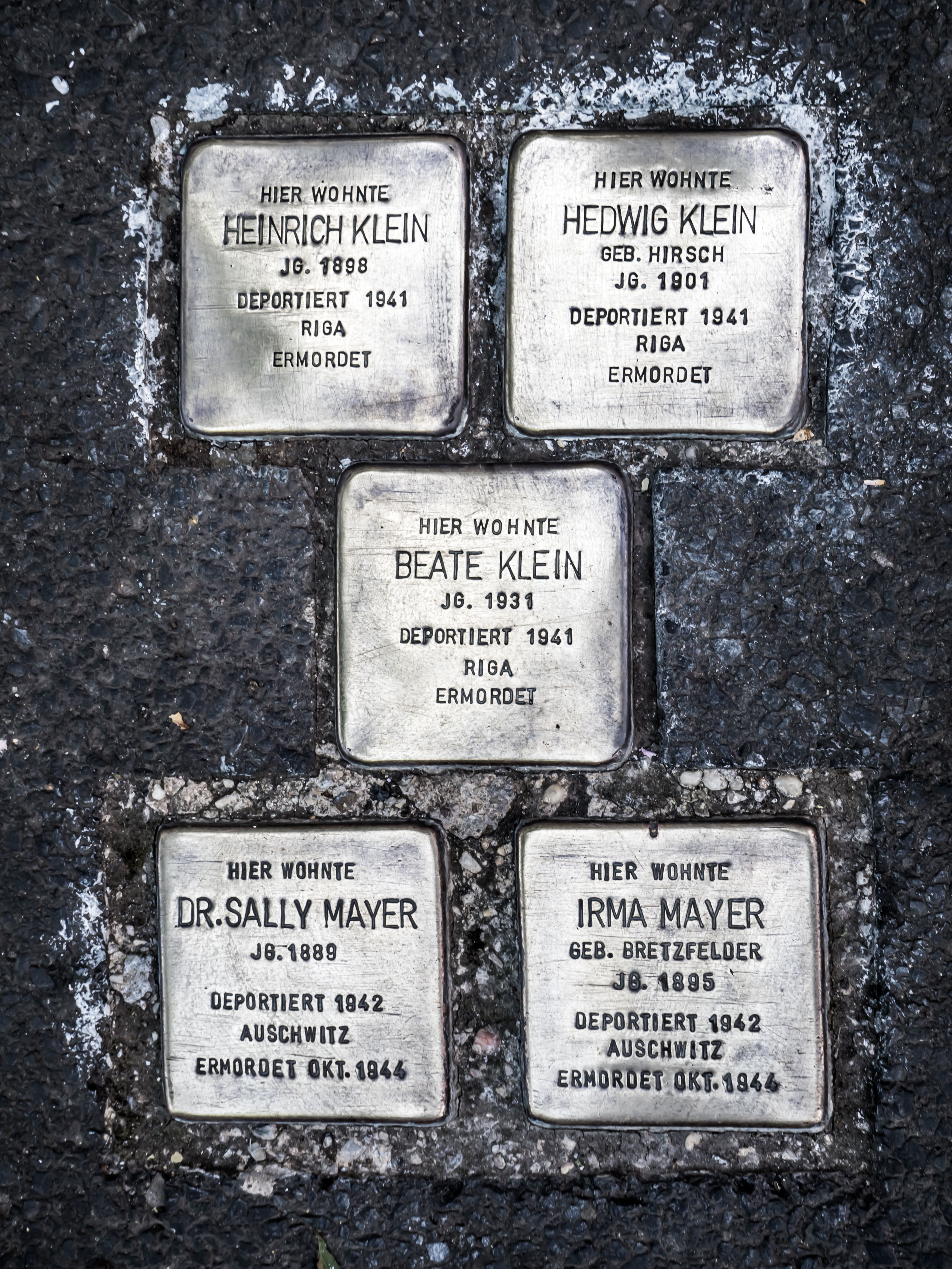
Undine Nami Bissmeier started practicing Zen Buddhism in 2002. In 2011 she did her first Sesshin in the lineage of Willigis Jäger (Leere Wolke) at Benediktushof. Since 2012 Undine has studied with Roshi Cornelius, of which was the same year she came in contact with Zen Peacemakers. Undine participated in the ZPI Auschwitz Retreats 2014 and 2015. In June 2019 she was recognized as a Dharma holder by Roshi Barbara Salaam. Undine currently lives in Karlsruhe, Germany and works as a nurse at a psychiatric ward.

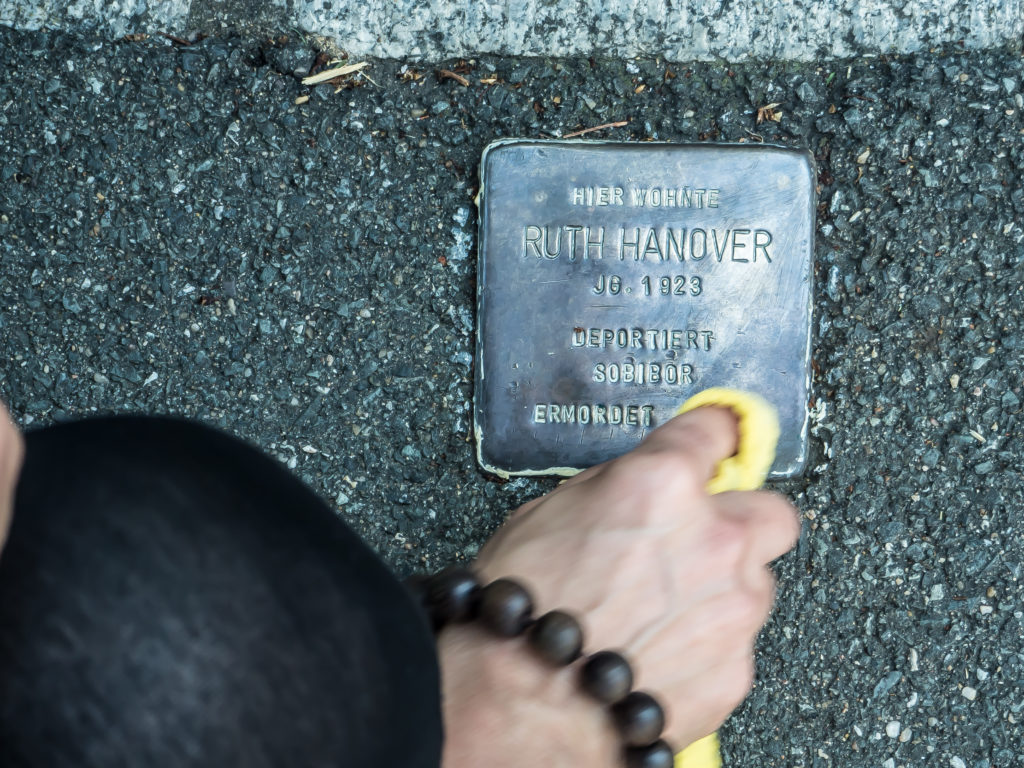
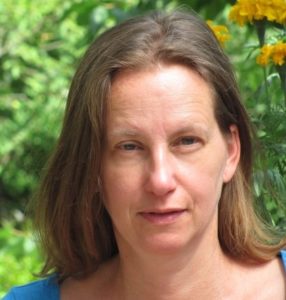

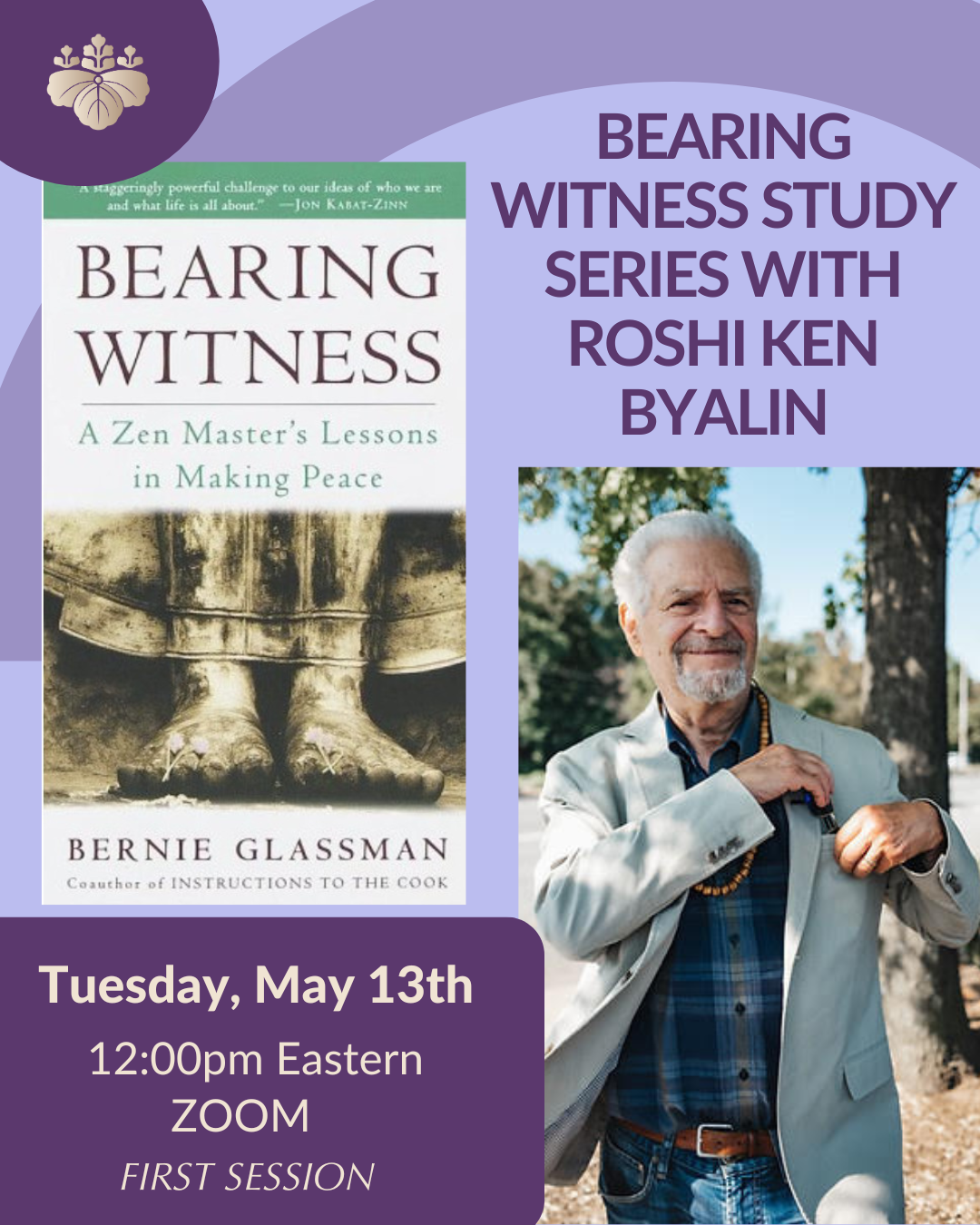

2 Responses
If someone wanted to visit the stones where do you start.
https://stolpersteine.app/en/stolpersteine/